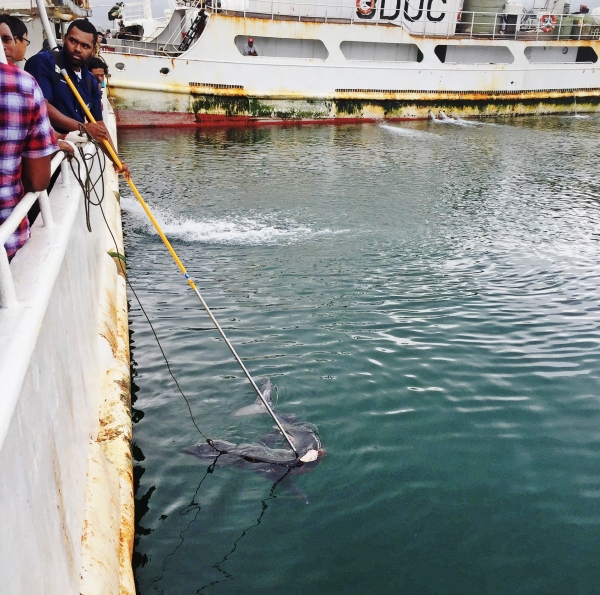Warrick Lyon is relying on a good supply of watermelons when he arrives in the Marshall Islands next week.
The NIWA scientist and shark expert is heading to the small republic near the equator to teach fisheries observers how to tag silky sharks with the aim of finding out how they fare if they get caught as bycatch on the longlines of commercial tuna fishing vessels.
While using a market-bought shark would be the best option for participants to practise their tagging aim and accuracy, it’s unlikely any will be available so the best option is to improvise.
“The tags are not difficult to apply but the further the sharks are from the boat, the trickier it is. Watermelons are just a good replacement for training to do the real thing,” Mr Lyon said.
Up to 20 Marshall Islands fisheries observers will participate in the tutorials, which is part of a wider programme that aims to provide accurate data on how many sharks survive after being caught and released by tuna longline boats.
Currently sharks that are released alive from a longline may subsequently die due to the trauma or stress of being caught and released, but they are not counted as catch. Accurate information on how many sharks die in tuna fisheries is critical to proper management, Mr Lyon said.
“We simply don’t know the survival rate of sharks that are released alive, which adds to uncertainties when it comes to estimating shark populations. This will help to fill in that gap.”
The shark tagging project is part of the Common Oceans Areas Beyond National Jurisdiction (ABNJ) Tuna Project, funded by the Global Environment Facility and implemented by United Nation’s Food and Agriculture Organisation. It harnesses the efforts of a diverse range of organisations to achieve responsible and sustainable tuna fisheries. NIWA provides the technical expertise.
When a tag is attached to a shark, it records the daily minimum and maximum shark depths and temperatures. After 60 days the tag automatically detaches from the shark and pops up to the surface where it transmits data via satellite.
The data are then used to determine the fate of the shark. Live sharks continually move up and down in the water column and the different depths will have been recorded and transmitted. But a dead shark will sink to the seabed. After two days of no vertical movement, the tag releases itself. If a tag remains attached for the full 60 days we know the shark has survived the capture and release process.
The project targets mako and silky sharks and has been operating in New Zealand and Fijian waters. Some 37 mako and 10 silkies have been tracked so far. The New Zealand phase of the project showed that only one of 34 tagged mako sharks did not survive. It is hoped about 200 mako and silky sharks will be tagged during the programme.
Tagging is ongoing in Fiji and is now being extended to New Caledonia and the Marshall Islands.
More information
Common Oceans Areas Beyond National Jurisdiction (ABNJ) Tuna Project

